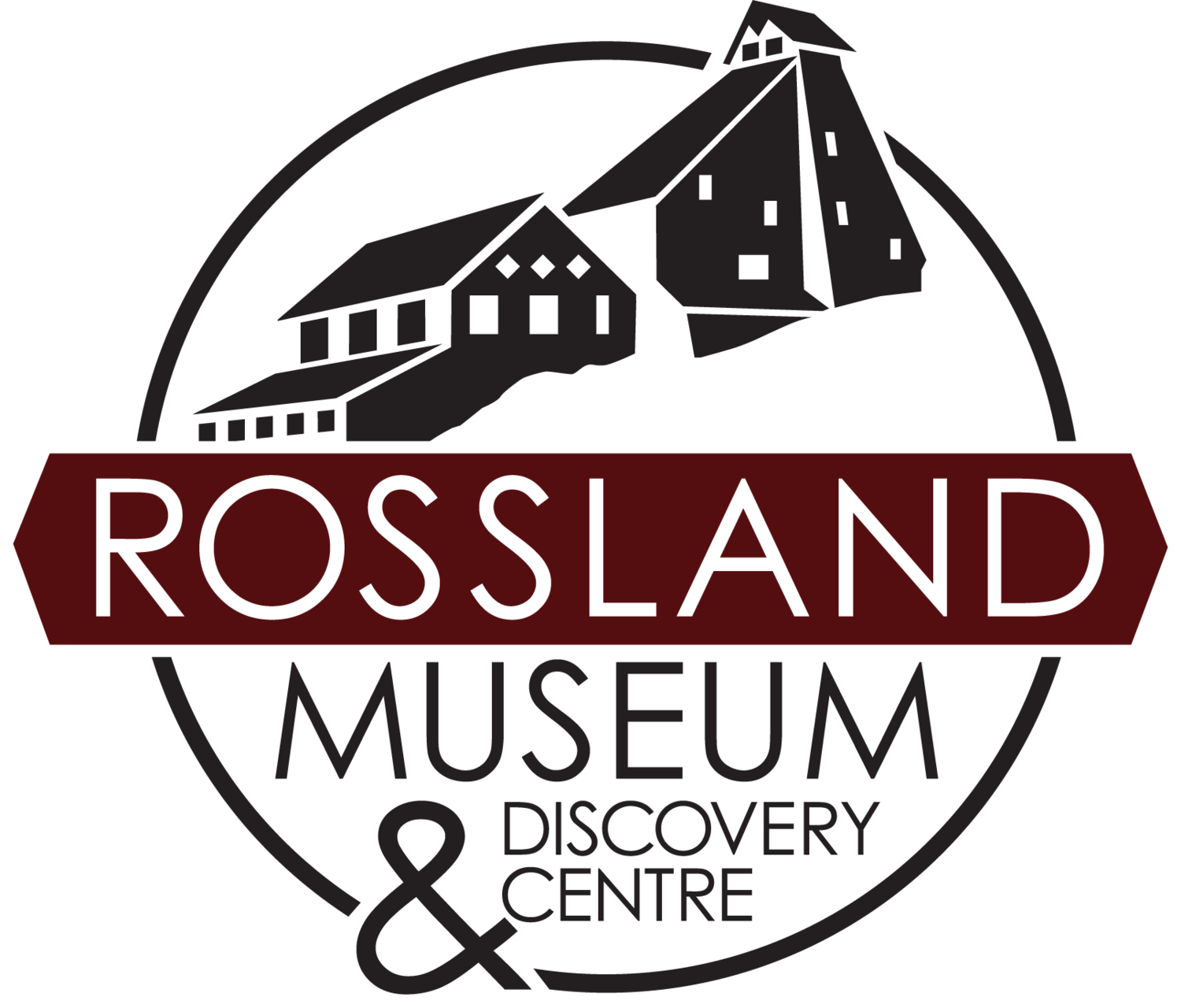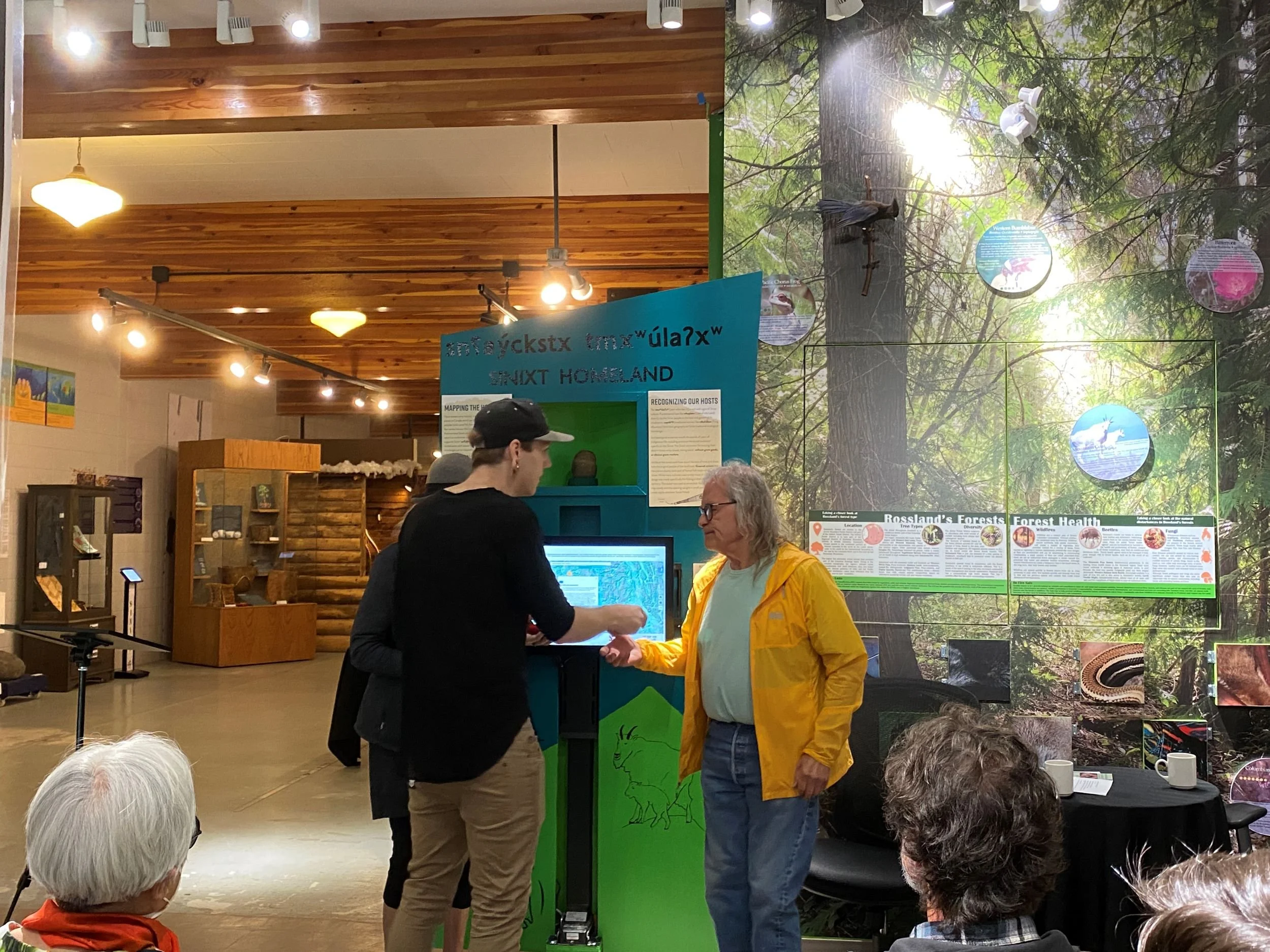New Permanent Exhibit: Sinixt Homeland
On June 21st, National Indigenous Peoples’ Day, we were honoured to formally open a new permanent exhibit: snʕay̓ckstx tmxʷúlaʔxʷ or Sinixt Homeland, now on display in the Museum’s Entrance Gallery.
Autonomous Sinixt Elder Lou Stone opened the ceremony with a blessing, followed by words from Autonomous Sinixt Elder and Matriarch Marilyn James. Their guidance reminded us all of our shared responsibility to this land. To Lou and Marilyn, we say, limlmt.
snʕay̓ckstx tmxʷúlaʔxʷ or Sinixt Homeland exhibit
This exhibit — the first of three foundational exhibits being developed as part of our Renewal Project — recognizes our place on Sinixt tmxʷúlaʔxʷ [tem-who-lau-h] (territory or homeland) and shares some of the cultural and archaeological indicators of generations of Sinixt presence on the land.
Fundamental laws like whuplakn (Law of the Land) directly tie the Sinixt people to the land and govern all its inhabitants.
captíkʷɬ (traditional stories) like sw̓ar̓ák̓xn (Frog Mountain) bind local geography to Sinixt traditional ecological knowledge.
Distinctive burial practices and ceremonial landscapes speak to thousands of years of Sinixt presence in this tmxʷúlaʔxʷ.
Autonomous Sinixt Elders Lou Stone (left) and Marilyn James at the exhibit opening, June 21st 2025
A centrepiece of the exhibit is a digital Sinixt traditional territory map, developed by the Autonomous Sinixt, which visitors can use to explore Sinixt territory, cultural sites, and language — all on an accessible touchscreen display. The exhibit also features a grooved sinker, part of traditional funnel fish traps, emblematic of Sinixt culture.
This project was made possible through ongoing collaboration with our Sinixt partners. We offer our heartfelt thanks to Autonomous Sinixt Matriarchs Taress Alexis and Marilyn James for their insight on language, cultural practice, and every detail in between — limlmt.
Community Engagement Manager Skylar Walsh presents Autonomous Sinixt Elder Lou Stone with ceremonial tobacco
We also gratefully acknowledge Destination BC and Indigenous Tourism BC for funding this work through their Indigenous Learning & Projects Grant for Visitor Services — helping organizations like ours engage in meaningful relationship-building and reconciliation.



